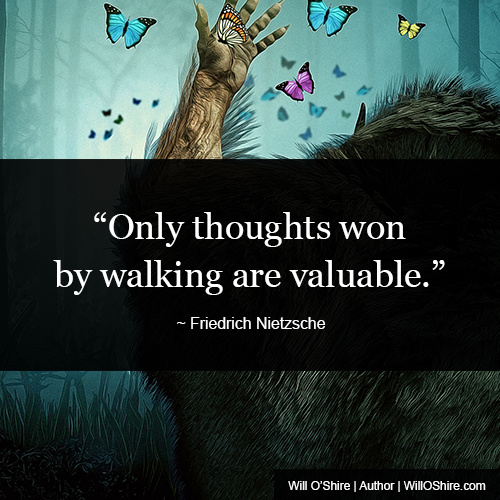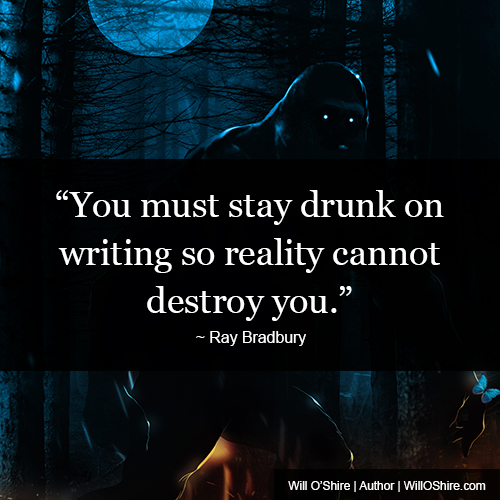3 Ways to Recharge Your Creative Battery and Write More

3 Ways to Recharge Your Creative Battery
Have you ever run into writer’s block? Or struggle to work through a creative piece? There are many things I do to combat these issues. As writers, words are our product. We have to constantly be creating new words, stringing them together into exciting stories hoping to sell them to an enthusiastic audience.
But we can’t do that, if we can’t write.
Step 1: Take a Walk
One of the easiest ways I find to recharge is to walk. When you are creatively stagnant, you need to build up more energy and allow your brain to do some preemptive work. Walking gets your blood flowing. It allows you to clear your mind and ponder ideas, story lines, plot holes, and more. The blood flows throughout your body, moving energy throughout and replenishing the oxygen in your brain.
It revitalizes you.
I find that walking for 40 minutes to an hour gives me plenty of energy and ideas to continue writing.
If I’m having a creative issue, if my mind stalls, I’ll think of my problem as I walk. The solution will normally come to me, pushed into my mind by the flow of energy moving throughout my body.
Exercise is important. You don’t have to walk, but I find walking is the easiest way to calm the mind. It’s a meditation of sorts, especially if you can walk in a quiet area without cars and people to cause distractions.
I’ve made a point to walk twice a day. Not having a normal nine-to-five job, I’m able to go for an hour at 4pm and midnight. My most productive walk is at midnight when the traffic is low and the moon is high. I thrive in the night time atmosphere.
Experiment with the time of day. Figure out when a walk is most productive for you, but most importantly, keep your energy flowing. If you keep your energy flowing, the creativity will flow.

Step 2: Write in Stints
You may be excited to write your story and get every word on the paper or as bytes on the computer. I’ve been there. I’ve wanted to plow through my stories as fast as possible.
A few articles ago, I wrote about writing speed and tracking your time. This is important with creative recharging. As you track your time, you’ll find that certain lengths of time give you boosts of creativity while others drain your creativity.
For me, that’s forty minutes. I work best writing in forty minute stints and no longer. Writing for a longer length of time slows down my thinking process. It’s like the gears in my brain start to grind together, not having enough oil to continue spinning. They need to be stopped, oiled, and restarted to function at an optimal level.
For some writers that stint can be an hour. I’ve heard of many writing for 15 to 20 minutes at a time. Less than a half hour is too short for myself. I find that my creativity really starts moving after five minutes and needs another half hour to spin its web of ideas onto the computer.
Many times, I’ll go over that forty minute stint, but I make a point to set a timer so that I stop within five minutes. I don’t want to burn out.
That has led to several days of writing 6000+ words throughout the day. The stint allows my mind to relax between sessions. Walking or doing other activities between sessions replenishes the energy and oils the gears. Sometimes I do the dishes, read, watch tv, or perform daily chores. As long as I’m not writing, the gears get their oil and run smoothly the next time I sit down.
Step 3: Switch Between Non-Fiction and Fiction Writing
I had no idea this would work until I studied how to write faster. When I wrote, I thought I would focus on a topic and write until I was done. Take one project at a time. Finish it. Then move on. Once I started switching between topics, I wrote faster.
The idea is that your creative mind takes more energy than the non-fiction mind. When we write non-fiction, we know the topic. Usually, we write about our industry, thoughts, personal life, and other subjects that we don’t have to use creative energy to generate a story.
When we write creatively, we grind the gears of our brains to a halt. I find that I can only write creatively for about 5 days at over 2000 words a day. My goal is 2000 words, and many days I will hit much higher numbers, sometimes 6000+. Once I hit that five day mark, my creative brain shuts down, literally.
The wheels refuse to move. I can work on plots, editing, and other tasks, but the movie playing in my mind pauses and refuses to move forward like it has a scratch on the disc.
So when I feel the creativity bogging down, I move to a list of non-fiction articles I have to write. Throughout the day I’ll record ideas for articles to make sure I have something the next time I need it.
When I need it, I write it.
This keeps me writing daily, creating content, and working on the craft.
Because I’m using what I call the “regurgitative mind”, I’m just spitting up what I already know. That’s super easy. It allows those creative gears to relax, lubricate, and get ready for their next push.
Figure Out What Works For Your Writing
Everyone is different. Some authors can write creatively every day. Others, like myself, need breaks. If you find yourself in a creative fog unable to see the next step, try writing stints or switching topics. Find what works for you and use it to your advantage. Track your writing daily, include word counts, and the topic. Figure out where you slow down and try things to fix it.
By tracking I discovered that the first day I write creatively, I only write about 800-900 words per stint. Every day after, I write about another two to three hundred words per stint per day. My creative mind snowballs until the fifth or sixth day where it explodes into a cloud of white dust. Then it needs a couple days before a creative snowstorm returns to build another snowball.
I would still write on the sixth, seventh, and eighth days, but I would struggle. By utilizing the three steps above, I was able to avoid a creative fog and output content on a daily basis.
Track your writing. Experiment. Find what works for you… and write.

© 2019 Willow Shire








